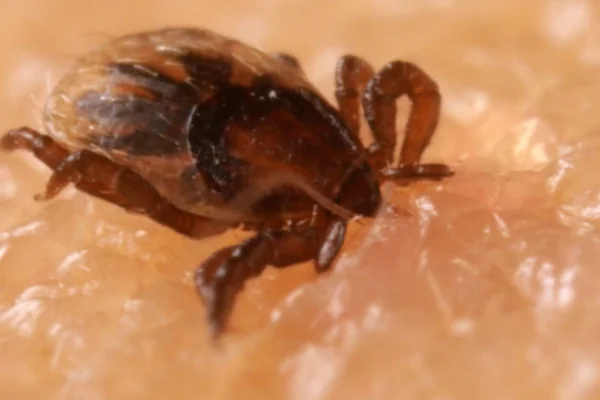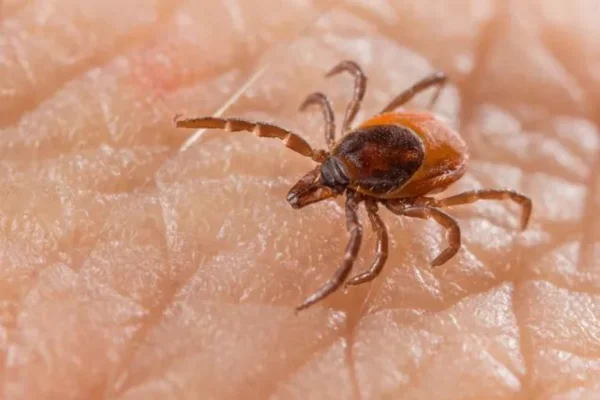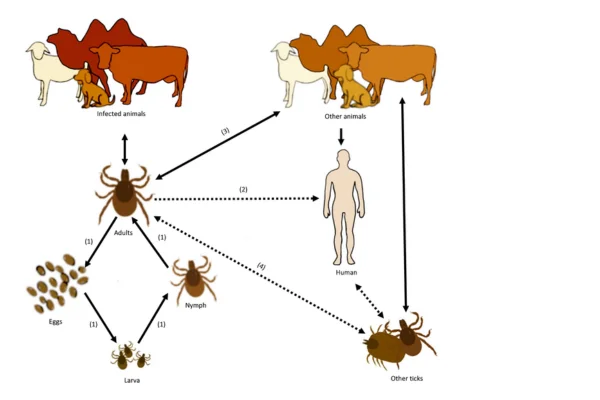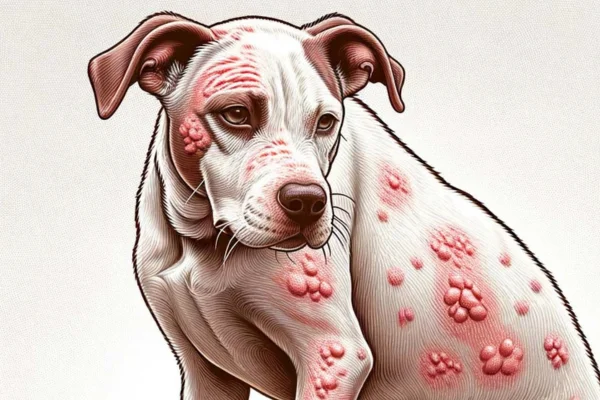Zoonoses Transmitted by Dog Ticks: A Hidden Threat
Ticks are small parasites that feed on the blood of their hosts and can transmit various diseases to both animals and humans. In the case of dogs, these parasites can be vectors of dangerous zoonoses, which pose a significant risk to public health. In this article, we will explore the main zoonoses transmitted by dog ticks, their symptoms, prevention and how to deal with this hidden threat.
What Are Zoonoses?
They are diseases that can be transmitted between animals and humans. They can be caused by various pathogens, including bacteria, viruses, parasites and fungi. Ticks, as vectors, play a crucial role in the spread of some of these diseases, especially in areas where there is a high incidence of tick infestation.
Main Zoonoses Transmitted by Dog Ticks
- Lyme disease Lyme disease is one of the best-known zoonoses transmitted by ticks. It is caused by the bacterium Borrelia burgdorferiIn humans, this disease can affect both humans and dogs. Symptoms in humans include fever, fatigue, muscle and joint pain, as well as the characteristic erythema migrans (a target-shaped rash). In dogs, the symptoms can be more subtle, such as lethargy, fever and intermittent lameness. Treatment usually involves the use of antibiotics, but early detection is crucial to avoid more serious complications.
- Brazilian spotted fever Transmitted by the star tick (Amblyomma sculptum), spotted fever is caused by the bacterium Rickettsia rickettsii. In humans, initial symptoms include high fever, intense headaches, muscle pain and a rash that can spread throughout the body. If left untreated, the disease can be fatal. In dogs, the infection may not be so obvious, but they may show fever, lethargy and anorexia. Prevention includes avoiding tick-infested areas and using appropriate repellents.
- Ehrlichiosis Ehrlichiosis is a bacterial infection caused by Ehrlichia canistransmitted by the brown dog tick (Rhipicephalus sanguineus). In humans, symptoms can range from fever, muscle and joint pain to more serious complications such as kidney failure and neurological problems. In dogs, the disease can cause fever, weight loss, anemia and, in severe cases, bleeding. Treatment involves the use of specific antibiotics and, in severe cases, additional therapeutic support may be required.
- Anaplasmosis Similar to ehrlichiosis, anaplasmosis is caused by the bacterium Anaplasma phagocytophilum It is transmitted by ticks. Symptoms in humans include fever, headache, muscle pain and, in severe cases, it can lead to organ failure. In dogs, it can cause fever, lethargy and neurological problems. Early detection and treatment with antibiotics are essential to prevent serious complications.
- Bartonellosis Transmitted by the brown dog tick, bartonellosis is caused by the bacterium Bartonella henselae. In humans, it can cause fever, swollen lymph nodes and, in some cases, can lead to cardiac and neurological complications. In dogs, the disease can be asymptomatic or cause non-specific symptoms such as fever and lethargy. Prevention includes strict tick control and treatment of existing infections with antibiotics.
Contents
Prevention and Control
Prevention is the key to protecting both dogs and humans from these diseases. Here are some effective preventative measures:
- Use of anti-tick products: Regularly applying anti-tick products to dogs helps to reduce infestations. These products can be in the form of collars, sprays or topical pipettes. It is important to follow the manufacturer's and veterinarian's recommendations to ensure the effectiveness and safety of the treatment.
- Regular inspection: Frequently check the dog's coat and skin for ticks, especially after walks in areas of dense vegetation. Immediate removal of ticks can significantly reduce the risk of disease transmission. Use specific tweezers to remove the tick, ensuring that the parasite is removed completely, including the head.
- Environmental maintenance: Keep the yard and outdoor areas free of tall vegetation and debris where ticks can hide. Mowing the lawn regularly, removing dry leaves and creating physical barriers can help control the tick population.
- Regular veterinary consultations: Take your dog for regular veterinary appointments to ensure that it is healthy and free of parasites. The vet can recommend specific preventative products and carry out tests to detect infections early on.
- Education and Awareness: Being informed about tick-borne zoonoses and the associated risks is essential. Knowing the signs and symptoms of these diseases can help with early detection and effective treatment. In addition, making the community aware of the importance of prevention can help reduce the incidence of these diseases.
Treatment
If a dog or human is diagnosed with a tick-borne zoonosis, treatment should be started immediately. In general, treatment includes the use of specific antibiotics to fight bacterial infections. It is crucial to follow medical and veterinary guidelines to ensure a full recovery. In addition, ongoing follow-up is important to monitor possible relapses or complications.
Impact on Public Health
Tick-borne zoonoses have a significant impact on public health. The spread of these diseases can lead to local outbreaks and pose a challenge to health systems. In addition, the costs associated with treating and controlling these diseases can be high. Cooperation between public health authorities, veterinarians and the community is essential to implement effective control and prevention measures.

Research and innovation
Ongoing research is essential to better understand tick-borne zoonoses and develop new prevention and treatment strategies. Technological innovations, such as the development of new anti-parasitic products and vaccines, can offer more effective solutions to combat these diseases. In addition, epidemiological studies can help identify high-risk areas and guide public health policies.
Conclusion
Zoonoses transmitted by dog ticks pose a serious threat to public health. Raising awareness of these diseases, combined with effective preventative measures, can significantly reduce the risk of infection. Protecting our pets and, consequently, ourselves, is a shared responsibility that requires continuous vigilance and proactive action. By better understanding these diseases and how to prevent them, we can create a safer environment for everyone.
Collaboration between animal owners, veterinarians and public health authorities is essential to combat this threat. With an integrated and informed approach, we can reduce the incidence of tick-borne zoonoses and protect the health of our communities.
Thank you for visiting us and check out our other work









